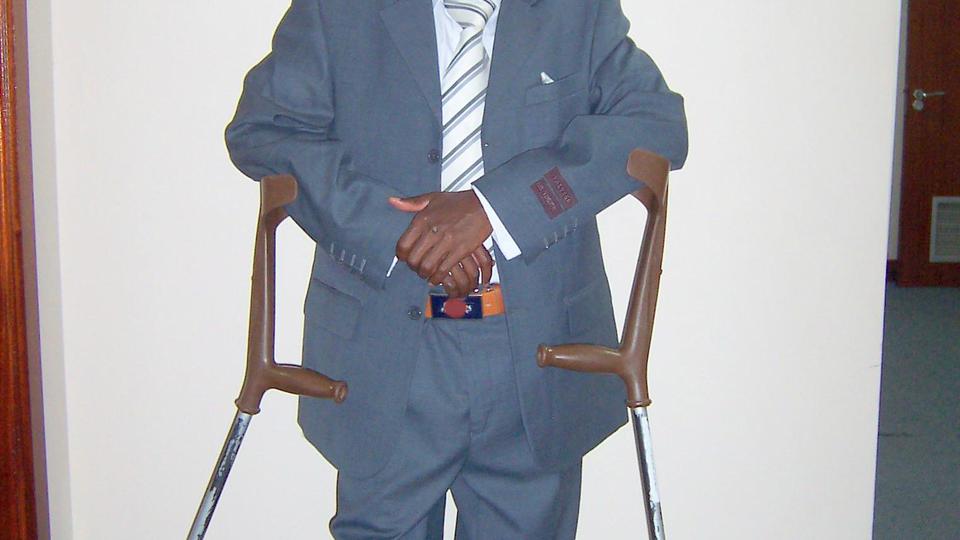You might not think it to look at him, but Tyson Kemege believes he is one of the luckiest men alive.
The native Kenyan was orphaned soon after birth and contracted polio as an infant. He spent his first two years in a bed in an orphanage and could only move around on his hands and knees until he got braces on his legs at age 22. He lives in a 120-square-foot room with three other young men. So, why does Kemege feel so lucky? Because he is able to attend college, thanks to the Perpetual Education Fund.
Tyson is just one of the nearly 3,000 people in Africa whose lives are better because of this unique program of The Church of Jesus Christ of Latter-day Saints.
| Tyson Kemege of Kenya believes he is one of the luckiest men alive because the Perpetual Education Fund enables him to attend college. 2011 Intellectual Reserve, Inc. All rights reserved | 1 / 3 |
The Perpetual Education Fund (PEF) was established in 2001 when Gordon B. Hinckley, then President of The Church of Jesus Christ of Latter-day Saints, announced a “bold initiative” to help faithful young members of the Church in developing nations who were trapped in a cycle of poverty.
Another Kenyan PEF recipient, Julius Omollo, said the program is “rekindling light that was once dead in us.”
The PEF program is patterned after the Perpetual Emigration Fund, which helped more than 30,000 early Church members journey to the Salt Lake Valley from Europe in the mid to late 1800s.
The program is funded through contributions of Church members and others who support its mission. It is a revolving resource in which money is loaned to an individual to help pay for training or advanced education. With better skills, the student then pays back the loan to the fund at a low interest rate.
In Africa, PEF helps currently 2,300 students in Botswana, Ghana, Nigeria, Ivory Coast, South Africa, Zimbabwe, Kenya, Uganda, Democratic Republic of the Congo, Zambia, Namibia, Swaziland, Lesotho and Madagascar.
Zinhle Faith Masilela of South Africa joined the program in 2005 when faced with the choice of getting married or finishing school. Her parents were paying for her education, but could not do so while also paying for a wedding. However, she was able to apply for a PEF loan and stay in school. Zinhle graduated in June 2006 and then went on to earn another degree in auditing.
“It was the PEF program that made it possible for me to help my husband provide for our family,” Masilela said. “We currently have two children and are planning to have more. I have decided to further my education and study to be a Certified Internal Auditor. My husband, who is also a PEF student, is planning to continue with his studies. We are grateful for the PEF program and for the many blessings it has brought into our lives.”
The average African student borrows about $1,200 a year for school, an amount that can have dramatic results. For example, Mbali Zitshu of South Africa received a $1,500 loan to participate in a three-month training program to become a fireman. After just six months on the job, his income increased ten-fold. In African countries where the unemployment rates can range from 10 to 95 percent, the 570 PEF graduates have gone on to good jobs in information technology, health care, construction, engineering and a variety of other fields.
Rex Allen, PEF’s director of training and communications, who serves as a volunteer, says the African areas have seen great success and the program is about more than just funding education.
“PEF is not about the money,” Allen said. “It’s about integrity and self-reliance. It’s really all about helping people get jobs so that they can come out of poverty and serve. It’s a leadership program where loans are made to help people become leaders in their home, community and in the Church.”
Related Video: Prophetic Promises




